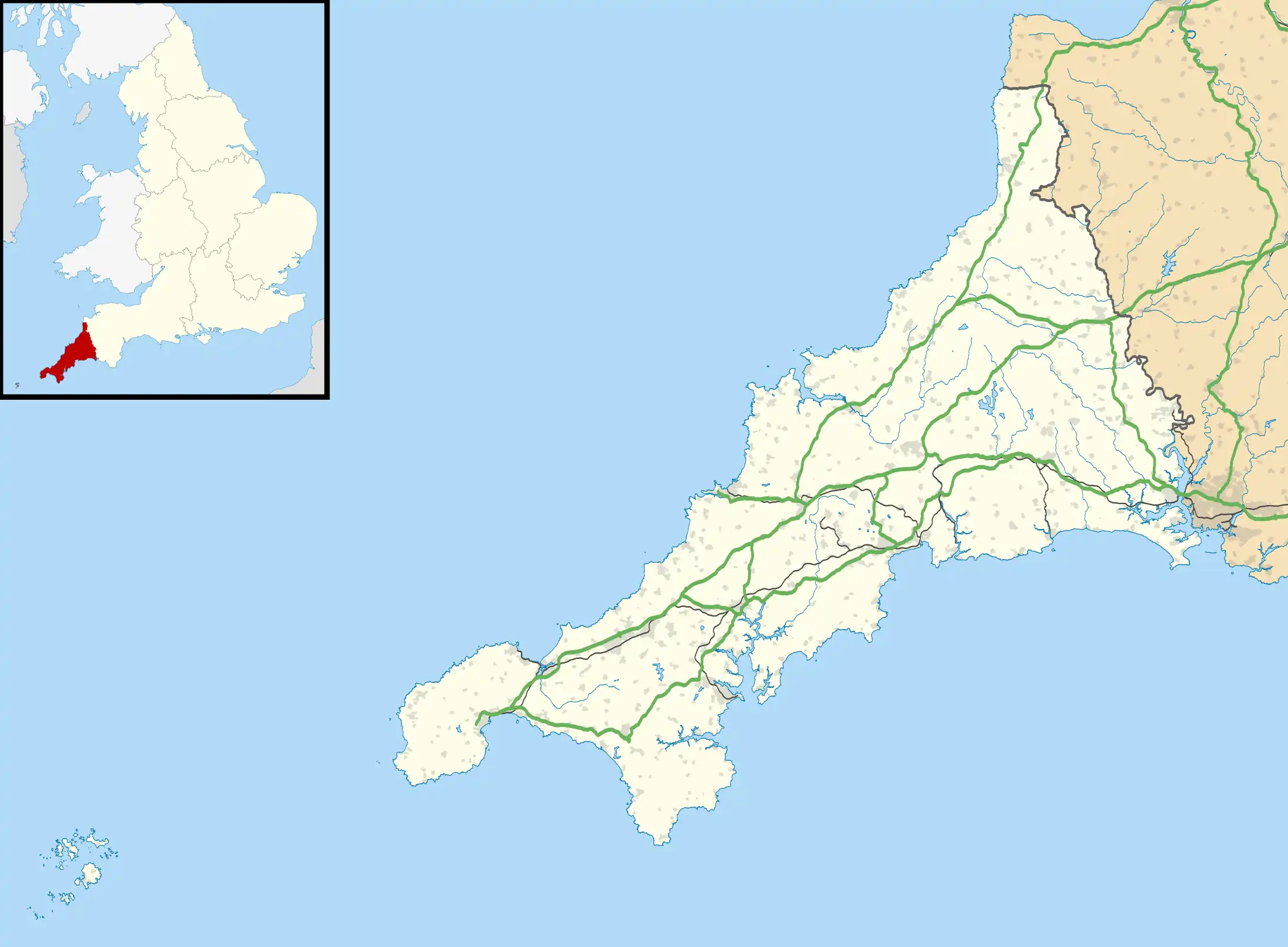_-_geograph.org.uk_-_1826904.jpg.webp) Viewed from the east | |
 Shown within Cornwall | |
| Location | Near St Keverne, Cornwall |
|---|---|
| Coordinates | 50°2′9.960″N 5°7′37.488″W / 50.03610000°N 5.12708000°W |
| OS grid reference | SW 762 198 |
| Type | Dolmen |
| History | |
| Periods | Neolithic |
| Designated | 10 August 1923 |
| Reference no. | 1006746 |
The Three Brothers of Grugith (Cornish: An Tri Broder a Grugwydh)[1] is a prehistoric site, a dolmen of the Neolithic Age, near St Keverne in Cornwall, England. It is a scheduled monument.[2]
Description
The dolmen is situated near the summit of a hill overlooking Goonhilly Downs. Two orthostats support a capstone; there are depressions on the capstone which may be cup marks, or may be naturally formed.[2]
The chamber enclosed by the stones measures about 4 by 2 metres (13.1 by 6.6 ft), height about 1 metre (3 ft 3 in). William Copeland Borlase excavated the chamber in 1872: he discovered a pit about 1 metre (3 ft 3 in) deep, and one flint flake.[2]
References
- ↑ "Three Brothers of Crugith (EN) - Henwyn Tyller". Akademi Kernewek. Retrieved 6 December 2021.
- 1 2 3 Historic England. "Portal dolmen known as 'The Three Brothers of Grugith' (1006746)". National Heritage List for England. Retrieved 7 November 2021.
This article is issued from Wikipedia. The text is licensed under Creative Commons - Attribution - Sharealike. Additional terms may apply for the media files.